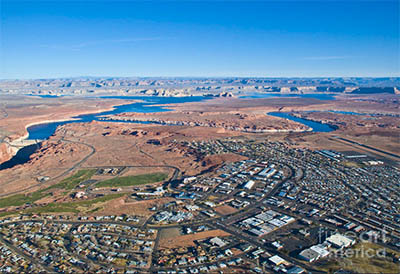
It was 1869. Ten men in four boats were about to embark on a journey that would cover almost 1,000 miles through uncharted canyons and change the west forever. Three months later only five of the original company plus their one-armed Civil War hero leader would emerge from the depths of the Grand Canyon at the mouth of the Virgin River.
Thirty five-year-old Major John Wesley Powell was that expedition's leader. From early childhood Powell manifested deep interest in all natural phenomena. He traversed various portions of Wisconsin, Illinois, Iowa, and the Iron Mountain regions of Missouri, making collections of shells, minerals, and general natural history objects, which led to his election in 1859 to the secretaryship of the Illinois Natural history Society. It is said that, in 1856 when but 22 years old, he descended the Mississippi alone in a row boat from the Falls of St. Anthony to its mouth, making collections on the way. Again, in 1857, he rowed the whole length of the Ohio river from Pittsburg to its mouth, and in 1858 made a like trip down the Illinois river to its mouth and thence up the Des Moines.
With the outbreak of the Civil War in 1860, Powell enlisted in the 20th Illinois volunteers, and was mustered in as second lieutenant. He was for a time stationed at Cape Girardeau and as captain of battery F of the 2nd Illinois artillery took part in the battle of Shiloh, losing his right arm at Pittsburg Landing. He returned to the service as soon as his wound healed, and took part in the battles of Champion Hill and Black River Bridge.
He was mustered out of the service at the end of the Civil War as a "major" in 1865 and accepted the position of professor of geology and curator of the museum of the Illinois Wesleyan University at Bloomington.
On May 24, 1869, Powell and nine men he recruited for a truly monumental journey pushed from shore their boats and headed down the Green River from Green River, Wyoming. They took provisions for ten months. The 1869 expedition continued down the Green to the confluence of the Grand River flowing west into Utah. The two mighty rivers then merged into the Colorado.
During the next two months on the river, the men encountered many more rapids that could not be run safely in Powell's estimation. He was ever cautious, fearful they would lose the rest of the supplies and perhaps even their lives. So they lined the boats down the side of the rapids, or portaged boats and supplies through the rocks along the shoreline. However, there were times when they had to run the swollen river through rapids that surely made them pray.
Although five of his original expedition had found the adenture too treacherous and parted company along the way, Powell had completed what he sought to do ... explore and confirm his theory on the Grand Canyon of the Colorado, a region up to that time almost wholly unknown and concerning which there were many vague and often wild rumors. His theory was the river preceded the canyons and then cut them as the Plateau rose.
Returning a national hero to Illinois, Powell promptly hit the lecture circuit then raised funds for a second expedition in 1871 which would produce what the first did not -- a map and scientific publications.
Powell's active work as a geologist eventually gave way to a new career in government. In March 1881, he assumed the directorship of the U.S. Geological Survey when the first director Clarence King resigned.
Powell died from a cerebral hemorrhage at his summer home in Haven, Maine, Sept. 23, 1902. His wife Emma Dean, whom he married in 1862, and their only child, a daughter named Mary Dean, survived him. With the honors bestowed to a Civil War veteran, Powell is buried in Arlington Cemetary.
- excerpt from John Wesley Powell Memorial Museum